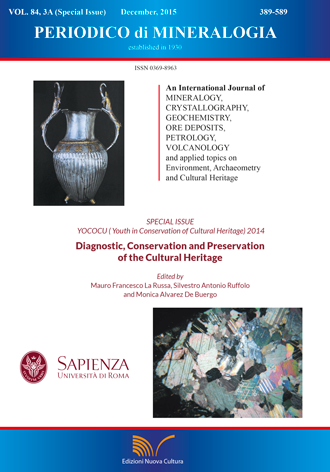Crime Art on the stone: graffiti vandalism on cultural heritage and the anti-graffiti role in its surfaces protection
DOI:
https://doi.org/10.2451/2015PM0023Keywords:
anti-graffiti, protection, limestoneAbstract
Apparently perceived like an easy thing commonly used, spray paint is a very complex product composed by substances strongly penetrating particularly into the porous materials. This characteristic is very hazardous for our cultural heritage. The problem concerning the surfaces protection from paints and signs is very hard to solve, both for the difficulty to remove these substances and for the variety of the materials that react in a different manner to the various paints and cleaning treatments because of their different physical-chemical characteristics. With the aim to evaluate the damages originated by the spray paints on the stones and the efficacy of anti-graffiti products, some laboratory tests have been carried out. Two different limestones have been selected like supports: a little porous, polishable wakestone and a very porous bio-calcarenite with very scarce mechanical properties. Both these limestones are used as coverings and structural elements of buildings and monuments around Mediterranean basin. Concerning the spray paint cans, the most popular Montana mtn94 has been used, and two commercial anti-graffiti have been applied as protective products. Using Scanning Electron Microscope, Infrared Spectrometry, Colorimetry, Mercury Intrusion Porosimetry and Contact Angle Analysis the interactions stone-paint, stone-anti-graffiti and paint-anti-graffiti have been investigated. In order to evaluate the real efficacy of the anti-graffiti, some cleaning and removal paint tests have been carried out. The research highlights that the anti-graffiti cause variations concerns the colour and/or the wettability in both limestones. Their effects are strictly related to the stonework and their microstructure but also the interaction with the paint is influent too.


